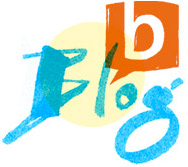
- Author: Martin Haussmann
- Categories: Tips, Tricks & Methods
- Date: 07.10.2019
Whenever we are trying to comprehend complex topics or make difficult decisions, it can be helpful to ask everyone involved to grab a pen. At the bikablo akademie, we call this type of small-format visualization “thought sketching.” It helps you to analyze everyday problems, arrive at informed opinions, and gain clarity about the situation at hand. Here’s a practical real-life example:
A few years ago, a colleague and I were working together to find suitable office space to rent. After one of our appointments to look at an office, the usual happened: we just couldn’t make a decision. Instead, we found ourselves asking a huge number of questions and, after a while, our heads were spinning. Should we sign the lease or keep looking?
In the middle of our dilemma, we decided it would be best to visualize. We took a large piece of paper and wrote at the top: “Should we sign the lease?” We then listed all of the pros and cons we had thrown around in our earlier discussion. Once we had all of the arguments set down in flow charts, option clouds, and pro/con lists, it suddenly became perfectly clear where we stood. We both agreed: “keep looking.” But, what exactly had happened here?
Using Visualization to More Quickly Arrive at Solutions That Suit Everyone
Before we had put pen to paper, we were both bogged down in confusion and uncertainty. Each of us had made important points, but there was no structure to them, so we couldn’t evaluate them. The thought sketches that we visualized during the second round of our discussion helped us to sort through our arguments – and later, they served as a “sounding board” By asking visualization questions like “have I understood you correctly?,” or “is it correct to picture it this way?,” we continued to work our way to a mutual understanding of the situation.
What worked so well for our simple problem can also be an enormous help when it comes to issues that are complex, abstract, specific, and data-heavy. Whenever we are trying to reach a mutual understanding of highly complex topics or when we are involved in interdisciplinary tasks, sketchnoting in dialogue is an effective method for putting the sketchnoting technique to use in getting to the heart of complex questions. And, of course, these sketches also help us to take our thinking to the next step. For instance, if you can gather everyone around a pinboard on which is posted a visualized exchange of perspectives, it makes it easier to say: “Now, when we can look at it like this – what kinds of ideas for improvement, solutions, or alternatives can we come up with?”

